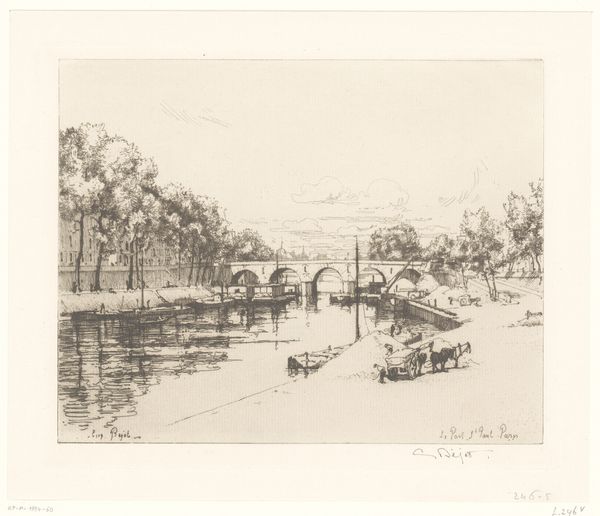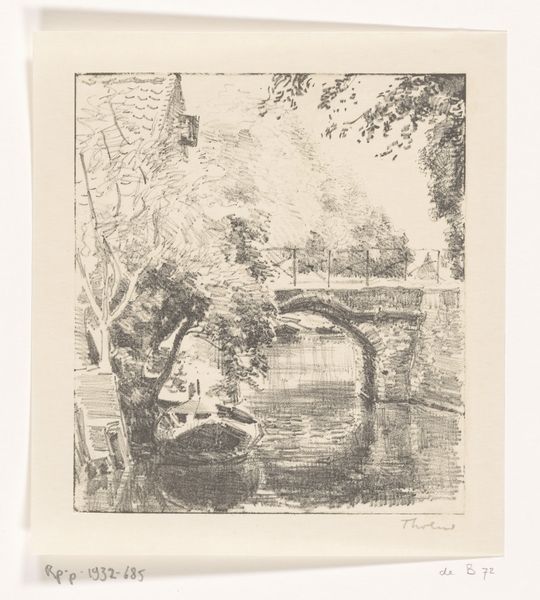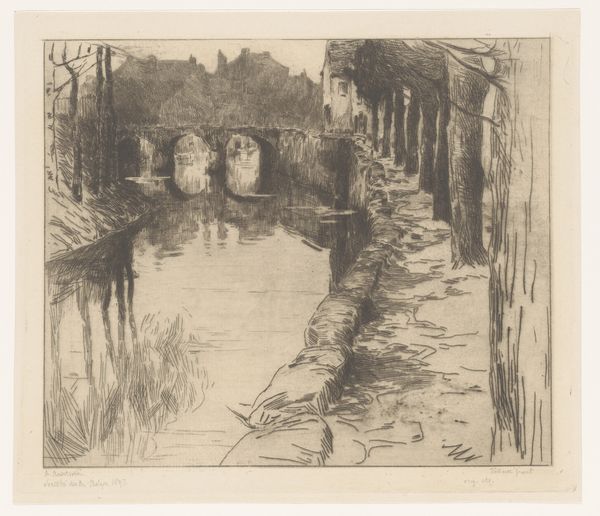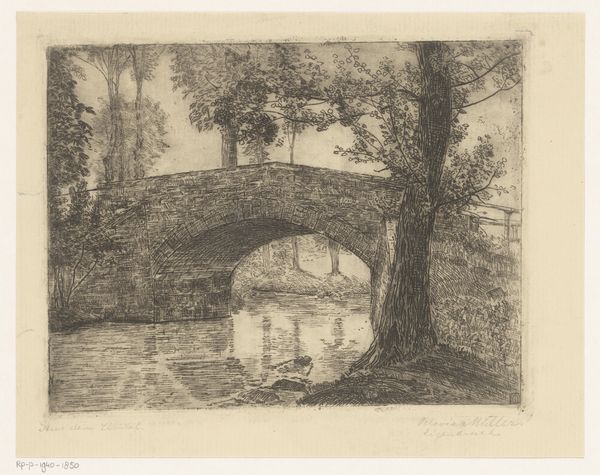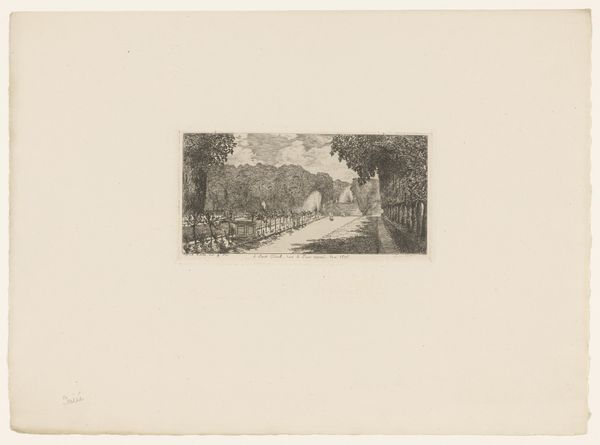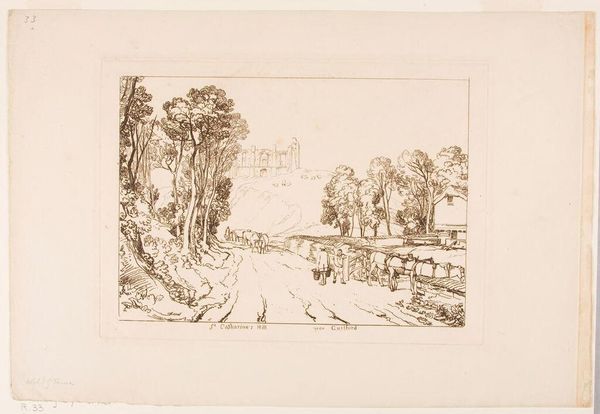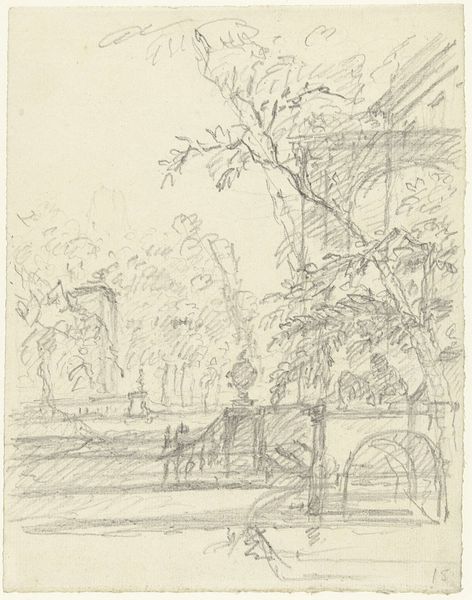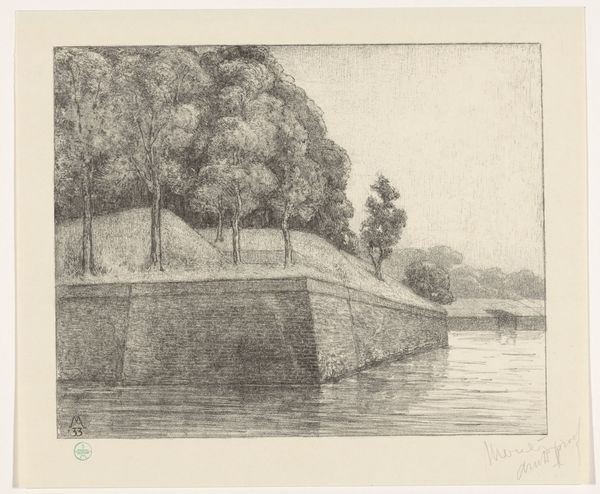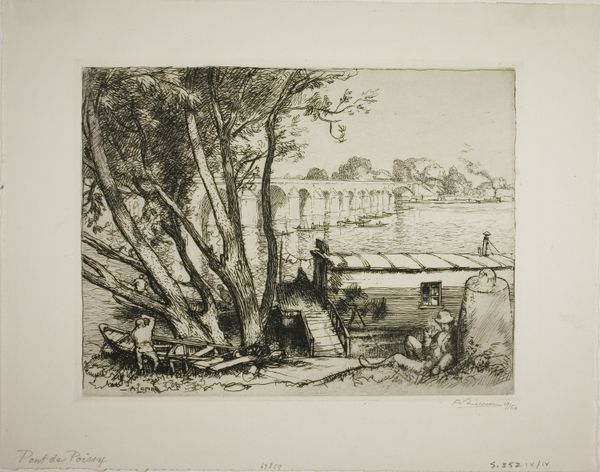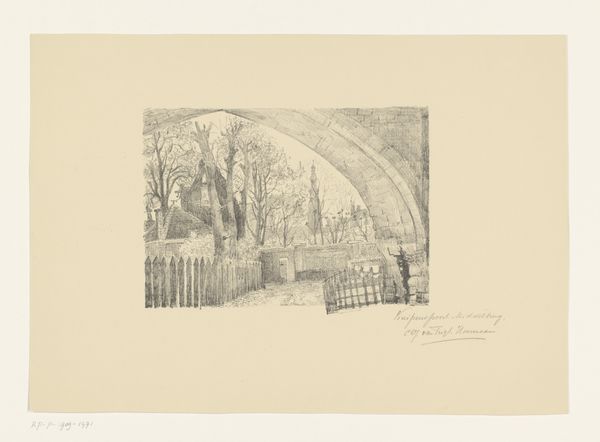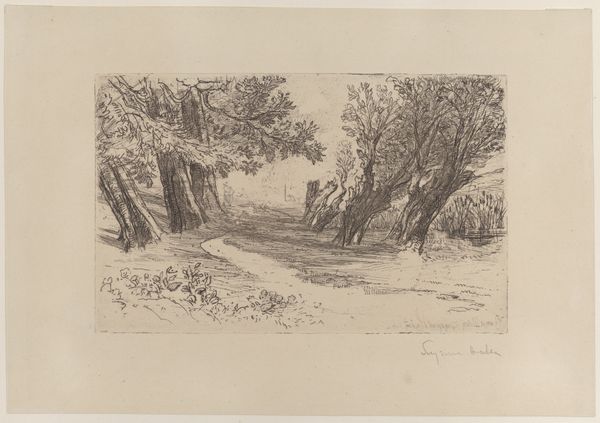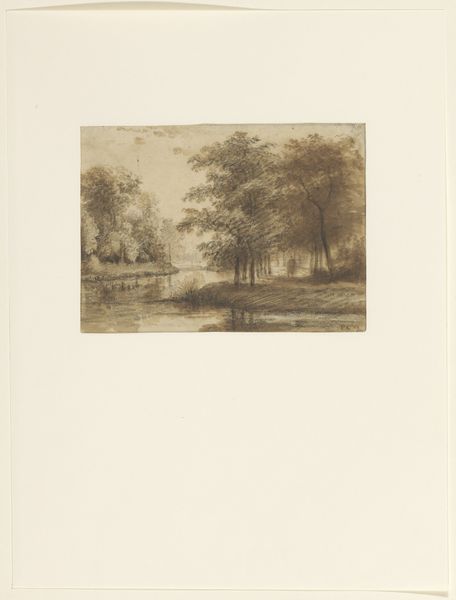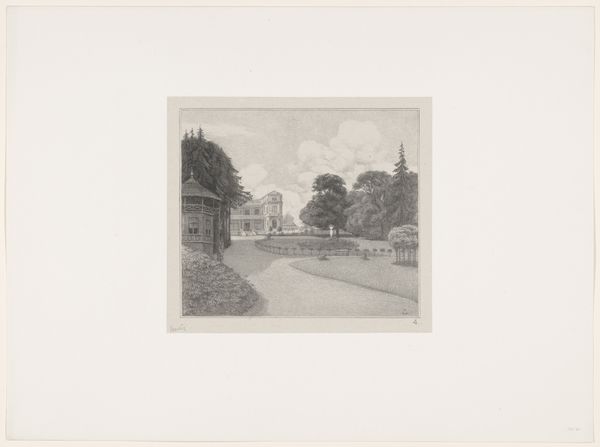
Dimensions: height 221 mm, width 221 mm
Copyright: Rijks Museum: Open Domain
Curator: Eugène Bejot's "Oever van de kade van Anjou in Parijs," created in 1925, offers a glimpse into the Parisian cityscape. It's an etching, capturing the delicate balance of ink and paper to evoke a specific sense of place and time. Editor: Immediately, I’m drawn to the wistful feeling it evokes. The lines are so fine, almost fleeting. There’s a strong contrast between the solidity of the embankment and the lightness of the trees. Curator: Bejot was known for his cityscapes. As an artist of his era, he's working in a lineage of printmakers depicting urban life for an expanding public. Paris, in particular, becomes a symbol of modernity in art at this time. Editor: It’s more than just documentation though, isn’t it? Those tall, slender trees remind me of cathedral spires – reaching upward. And then the bridge arches echo that sentiment. Could these be a link, or a replacement of the symbolic bridge? Curator: Absolutely. While many saw etching and printmaking as a more democratic artistic expression due to its reproducible nature, these images are far from "snapshots". They have a long cultural pedigree reaching far into Western society. How images of city infrastructure served political aims or civic aspirations, like showing advances in the era... Editor: Exactly. There's a layering of meaning, I feel, using symbols to ground his vision into the zeitgeist of that epoch. Curator: And consider that Paris was, for many, synonymous with progress but that progress was available only to the middle classes, who could consume these prints as signifiers of their sophisticated taste. And this connects to galleries, artistic training and salons where artists and intellectuals would mingle shaping trends in art. Editor: A bridge between social classes too perhaps, facilitated and perpetuated by the symbolic value within that imagery? Very compelling, to consider that. Curator: So when we view this etching now, in the Rijksmuseum, we aren't merely seeing a street scene, but participating in the ongoing historical dialog shaping our ideas about art, culture, and class. Editor: Ultimately, this artwork evokes more than a simple sense of nostalgia for me now. I feel its enduring power through the web of historical ties that the piece, or rather this dialogue with it, uncovered today.
Comments
No comments
Be the first to comment and join the conversation on the ultimate creative platform.
